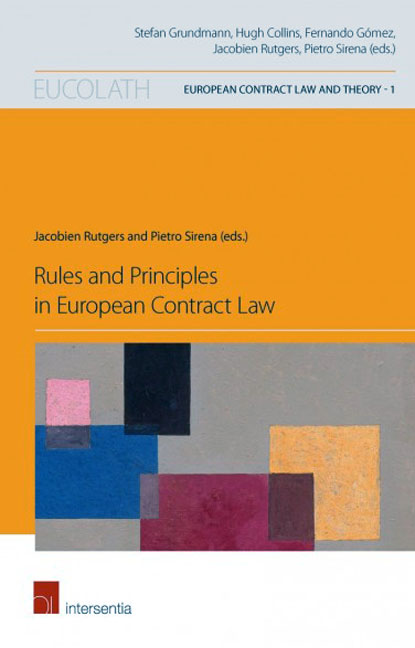Book contents
- Frontmatter
- Contents
- Table of Cases
- List of Authors
- Introduction
- Principles versus Rules in the Emerging European Contract Law
- The ECJ and General Principles Derived from the Acquis Communautaire
- The Principle of Effectiveness and EU Contract Law
- The Principle of Proportionality and European Contract Law
- ‘General Principles’ and ‘Underlying Principles’ in the Proposed Common European Sales Law and their Role in its Interpretation
- Contractual Autonomy and European Private Law
- Good Faith and Reasonableness in European Contract Law
- Benefits to the Defendant as a Measure for Relief: Toward a Specific Rule in European Contract Law?
Contractual Autonomy and European Private Law
Published online by Cambridge University Press: 28 November 2017
- Frontmatter
- Contents
- Table of Cases
- List of Authors
- Introduction
- Principles versus Rules in the Emerging European Contract Law
- The ECJ and General Principles Derived from the Acquis Communautaire
- The Principle of Effectiveness and EU Contract Law
- The Principle of Proportionality and European Contract Law
- ‘General Principles’ and ‘Underlying Principles’ in the Proposed Common European Sales Law and their Role in its Interpretation
- Contractual Autonomy and European Private Law
- Good Faith and Reasonableness in European Contract Law
- Benefits to the Defendant as a Measure for Relief: Toward a Specific Rule in European Contract Law?
Summary
FREEDOM OF CONTRACT AS A PRINCIPLE OF EUROPEAN PRIVATE LAW
Freedom of contract is a concept that characterises the legal systems of the European continent as well as those of the common law and is oft en expressly foreseen in the civil codes, anchored in the constitutions or otherwise established in the law in action.
Having a look at the different experiences, the meaning attributed to the freedom of contract is not however always consistent and its limits in particular are different. For example, under the common law the duties of good faith in particular during the phase of negotiating are very weak, especially as regards what we call unjustified rescission and the liability that follows from it.
Moreover, in many scientific contributions, private or contractual autonomy and freedom of contract are mentioned without any distinction. Some authors define contractual autonomy as the basis of the freedom of contract; others consider autonomy and freedom to be synonyms. A terminological strictness can be found in the German literature, where for example a distinction is made between Parteiautonomie, referring to the parties’ freedom to choose the law that will govern the contract, and Vertrags- or Privatautonomie to indicate the freedom to conclude a contract or not, choose the other contracting party and establish the content of the contract.
With regard to the title of the conference, ‘Principles and Specific Rules in European Contract Law’, organised by the Society of European Contract (SECOLA), I first of all consider it appropriate to place the freedom of contract among the principles, although in many legal systems this principle is regulated by specific rules, for example, in Article 1322 of the Italian Civil Code. It also needs to be pointed out, however surprising it may seem, that the conceptual definition of principle is not at all certain, especially the difference between principle and general clause. In Italy, for example, no distinction is generally made between the principle of good faith and the general clause of good faith.
- Type
- Chapter
- Information
- Rules and Principles in European Contract Law , pp. 123 - 134Publisher: IntersentiaPrint publication year: 2015

